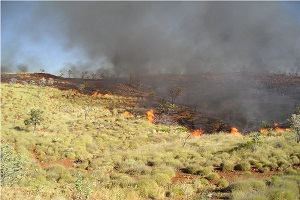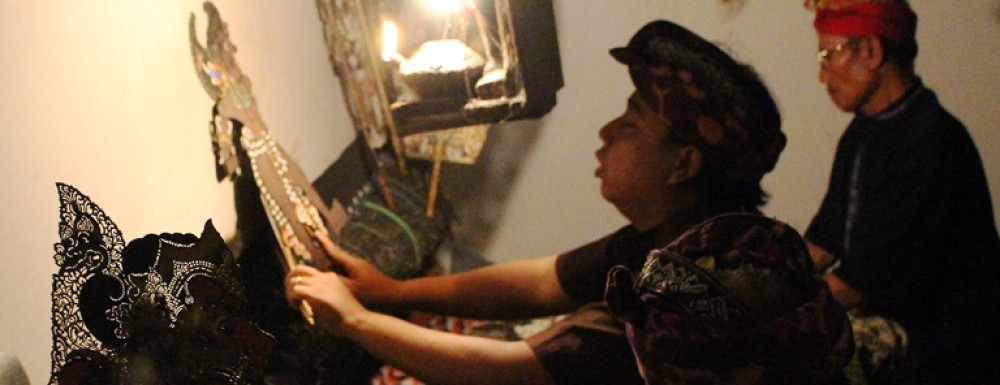STANFORD University researchers have produced hard data to show desert Aboriginal bush-burning practices result in smaller, cooler fires and help conserve reptiles and small mammals while promoting plant diversity.
 Ecological anthropologist Associate Professor Rebecca Bliege-Bird says key game species are more plentiful near Western Desert communities and well-used roads, where people frequently light hunting fires.
Ecological anthropologist Associate Professor Rebecca Bliege-Bird says key game species are more plentiful near Western Desert communities and well-used roads, where people frequently light hunting fires.
“Where people are lighting fires and making small fire mosaics you tend to find more kangaroo (Macropus robustus) and you also tend to find more sand goannas (Varanus gouldii),” she says.
Science Network WA, now defunct, originally published this article. –GV 21/5/2017
STANFORD University researchers have produced hard data to show desert Aboriginal bush-burning practices result in smaller, cooler fires and help conserve reptiles and small mammals while promoting plant diversity.
Ecological anthropologist Associate Professor Rebecca Bliege-Bird says key game species are more plentiful near Western Desert communities and well-used roads, where people frequently light hunting fires.
“Where people are lighting fires and making small fire mosaics you tend to find more kangaroo (Macropus robustus) and you also tend to find more sand goannas (Varanus gouldii),” she says.
Professor Bliege-Bird says the research grew out of a 2002 trip she made with people now living in communities such as Punmu and Kunawarritji, to a part of the desert they rarely visited.
“People were far out of their normal country so there was no fire, there was no hunting,” she says.
“And all of a sudden we were going back toward the community from this remote campsite, and once we passed this particular point jumped out of the vehicle and started burning the place down.”
On subsequent visits she and her husband, ecological anthropologist Dr Douglas Bird, accompanied Martu people on more hunting trips.
Using transect lines, they surveyed desert plants and the incidence of animal tracks.
At the same time, their Martu hosts continued to use fire to flush out sand goannas, and the Birds carefully counted and weighed all of the animals caught.
“We oftentimes carry a GPS unit, and take notes on where fires are started [and] how much time people spend lighting fires during the course of hunting,” she says.
“So we have that on-the-ground information that we’ve been combining with satellite imagery and remote sensing, looking at the footprints of people’s fire after we’ve been down hunting with them.
“We can look at what that looks like on a landscape scale from these satellite pictures.”
This allowed Rebecca and Douglas Bird to compare the effects of lightning generated bushfires and Aboriginal hunting fires on desert country.
“Rather than more of the landscape burning under an Aboriginal regime, we find that less [of it] burns,” the recently published paper says.
“The Aboriginal regime also disturbs contiguous habitat and provides more successional fire breaks that limit the spread of large fires.”
She says the Martu people‘s hunting fires also help promote plant diversity by temporarily removing the spinifex clumps that tend to out compete other species.
